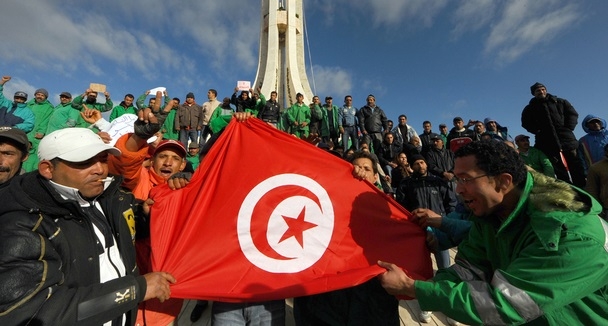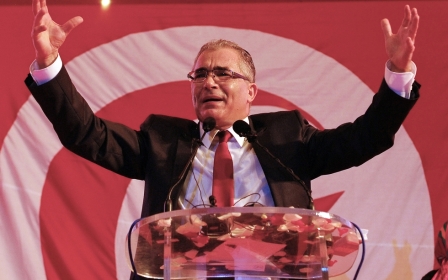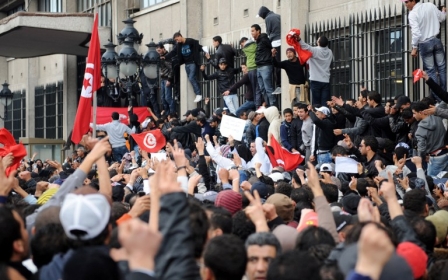
It’s too soon to evaluate the Arab revolutions
Over the last five years, each anniversary of the Arab uprisings sparked in 2011 has occasioned an outpouring of categorical evaluations of whether they have succeeded or failed. Reductionist and premature requiems to the Arab revolutions abound, lamenting the violence and chaos unleashed.
The trajectories of different countries are compared as if progress could be quantified using a standard unit of measurement, with Tunisia presented as a success and other countries in the region as regrettable, utter failures.
I propose we do neither of these. Such analyses utterly lack contextualisation and do little justice to the experiences, desires and struggles of the peoples involved. They focus on the current phase of chaotic change as an aberration, as if it were preceded by a period of harmony, prosperity and social wellbeing. This ahistorical approach is divorced from the realities of the daily violence, profound indignities and pervasive corruption visited upon these societies for decades by the regimes that ruled them.
We are all pained by the current divided state of Libya teetering on the brink of civil war, Yemen enmeshed in a sectarian struggle, Egypt and the death of its democratic process and Syria, the scene of daily bloodbaths.
What preceded this violence was decades of brutalisation during which citizens’ movements were intensely monitored, freedoms narrowly circumscribed, expressions of dissent severely punished, and state resources diverted to benefit a narrow cabal of families and elite networks.
Syria’s intelligence services, the Mukhabarat, policed every moment of a Syrian’s life from birth till death, inspiring deep fear among the population. These services applied astounding creativity and skill to terrorising the population, using no less than 38 types of torture and mistreatment against detainees, according to documentation by Amnesty International and local human rights groups. These include electric shocks, pulling out fingernails, burning genitalia, forcing objects into the rectum, beatings while the victim is suspended from the ceiling (casually known as the “roast chicken” position), alternately dousing victims with freezing water and beating them, hyperextending the spine, bending the body into the frame of a wheel and whipping exposed body parts, using a backward-bending chair to asphyxiate the victim or fracture the spine, and stripping prisoners naked for public view.
The Syrian regime, which today shamelessly seeks to portray itself as a victim of terrorism, has terrorised and traumatised its population for decades. The same can be said for every regime that the Arab uprisings have sought to remove. Evaluating the uprisings to be successes or failures due to the outbreak of violence fails to situate them within a pre-revolution context of daily deployment of the most barbaric forms of physical and psychological violence and repression of freedoms.
Contextualisation within the particular space and time of these revolutions is also essential. Unlike previous waves of democratisation, the Arab uprisings take place in unique conditions – a downturn in the global economic cycle and declines in gross national product, trade and investment; a dramatic decrease in the power and membership of political parties across the world; fragmented and polarised civil societies; and the rise of social media giving rise to the vexed question of how to transform virtual networks and activism into concrete political change.
Unlike many other recent cases of democratisation, the Arab uprisings are taking place in a region with little prior experience of democracy, extremely weak and ineffectual regional institutions and multiple conflicts.
As the democracy scholar Philippe Schmitter points out, the MENA region lacks a “security community” that can act to maintain stability and prevent neighbouring countries from taking advantage of transitioning countries’ decline in state capacity during their transformation. Instead, countries experiencing uprisings have had to face the interference of regional powers that have exacerbated conflicts, deepened faultlines and even given direct support to counter-revolutionary forces.
The truism that Tunisia has succeeded where other countries in the region have dismally failed is also misleading. History has shown us that there is no single path to democracy - two neighbouring countries can reach the same point through entirely different routes, as seen with Spain and Portugal’s singular transitions. As the public law expert Jacques Ziller wrote of the transitions in Eastern Europe, “No one can know what the methodology of these transitions will be – like movement, it can only be proven through the act of moving.”
Transitions can involve cycles of autocracy and democracy for various periods of time. Furet reminds us that France alternated between republic and monarchy from 1789 to 1851. He locates the moment of the ‘victory of the revolution’ at the triumph of the republicans over the monarchists and the creation of the Third Republic in 1870. The building of a democratic system was a painful, protracted process spanning nearly a century.
Comparing the paths of political change in the countries of the Arab uprisings imposes an imagined unity on utterly diverse state forms and sociological contexts and adopts a culturalist framework for understanding political change.
Culturalist theories have long represented politics in the Arab region as a consequence of religious and cultural values, and obscured factors such as social and economic structures and histories of state formation. As a result, these theories were utterly incapable of explaining the outbreak of the Arab revolutions. Nor are they today able to explain the significant divergence in the paths that Arab revolutions have taken despite sharing some common features of language, culture and religion.
Tunisia does indeed appear to be on the path to democracy, but one that is subject to obstruction and possible reversal at any moment – particularly so in light of recent terrorist attacks and the attempted return of the police state. However, Tunisian society has undoubtedly achieved a number of irreversible gains since the revolution. The last five years have been an experience in pluralism that is unprecedented in Tunisian history.
The National Constituent Assembly that drafted Tunisia’s constitution between 2011 and 2014 was the scene of lively political dialogue, negotiation and cooperation between actors who represented the entire spectrum of Tunisian society. This has redefined politics, creating a national political space accessible to new voices from previously excluded social groups, classes and regions. It has broadened the political space to include new social and economic issues – this can be seen in the raging national debates on police brutality, transitional justice, the failing education system, bribery and corruption, laws on homosexuality and prison conditions, among many.
Citizens are leading campaigns to introduce stricter inspections of prisons, establish better protection against sexual harrassment of women, abolish severe laws on drug possession, and on many other issues in ways that are redefining the role of the citizen.
The Tunisian revolution has not fundamentally transformed economic structures, administrative practices, police and security policies or regional inequalities. This can be seen from recent cases of deaths in police custody that have provoked outrage. But it has revolutionised the realm of the possible. It has opened up an unprecedented public space for expression, deliberation and political action that serve as the starting ground for sustained, long-term mobilisation to reform state structures, build democratic institutions and create a society based on equality and social justice. This is long-term work that requires the continual mobilisation of citizens through social movements, collectives and campaigns on local and national level.
The work of Tunisia’s official transitional justice body, the Truth and Dignity Commission, is critical to this transformation. Since December 2014, the body has been working to collect testimonies from victims of human rights violations dating back to 1955. This process of addressing the painful past is not only aimed at restoring the individual dignity of those who suffered state violence. It is also a collective process of redefining the body politic and recognising and giving voice to the experiences of those who have hitherto been voiceless - those whom Tunisia’s post-independence state has tortured, excluded, repressed and marginalised.
This means revolutionising our understanding of modern Tunisian history, of the nature of the Tunisian state, of the role of political elites, of the experiences of different regions, and of the imposition of structures of political and economic marginalisation that led to the conditions that sparked the revolution. This process redraws the borders of history and is key to the transformation of the relationship between state and society that the Tunisian revolution sought to bring about.
Revolutions have no clear identifiable end, no “indicators” amenable to simple evaluation and no “benchmarks” for comparing progress. They are unique processes of transformation of political, administrative, constitutional, economic and social structures. This is what differentiates them from coup d’etats, which are mere replacements of one set of ruling personnel by another. Such transformations have no pre-defined timescale. There are grounds for optimism in Tunisia’s case - the establishment of the Constitutional Court to uphold the constitution and the impending process of decentralisation of power to local and regional authorities carry the promise of transforming the practices and structures of state authority.
Whether the Arab revolutions succeed in establishing more accountable and representative government can only be proven through the unfolding act of revolution. The American Revolution of 1776 is hailed for creating a democratic system – yet over half the population (women and slaves) continued to be denied the vote for more than 100 years. The French Revolution gave birth to a new democratic order and new conceptions of history – as well as civil war, the guillotine, the death of over a million French men and women, and the Reign of Terror in which at least 300,000 suspects were arrested and 17,000 officially executed.
The Arab uprisings are no exception to the history of revolutions, involving struggles for power between revolutionaries and counter-revolutionaries, local rebellions, foreign interventions and instability. Uncertainty is the currency of change of revolutions, and the Arab region today is no exception.
- Intissar Kherigi is a Tunisian-British researcher and PhD student at Sciences Po Paris in Comparative Political Sociology. She holds a BA in Law from Kings College, Cambridge University and a Masters in Human Rights from the London School of Economics and Political Science. She is a qualified solicitor and has worked in the UK House of Lords, the United Nations and the European Parliament.
The views expressed in this article belong to the author and do not necessarily reflect the editorial policy of Middle East Eye.
Photo: Tunisian sanitary workers demonstrating in front to Tunis city hall on 22 January, 2011 in Tunis (AFP).
Middle East Eye propose une couverture et une analyse indépendantes et incomparables du Moyen-Orient, de l’Afrique du Nord et d’autres régions du monde. Pour en savoir plus sur la reprise de ce contenu et les frais qui s’appliquent, veuillez remplir ce formulaire [en anglais]. Pour en savoir plus sur MEE, cliquez ici [en anglais].




